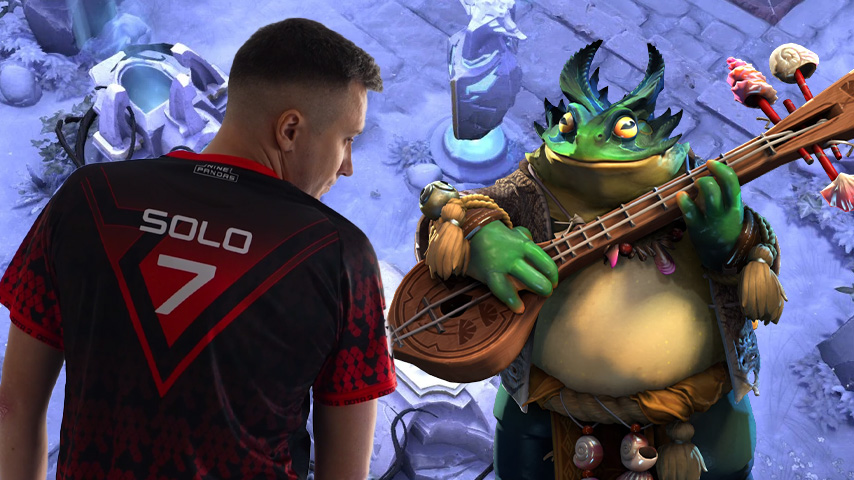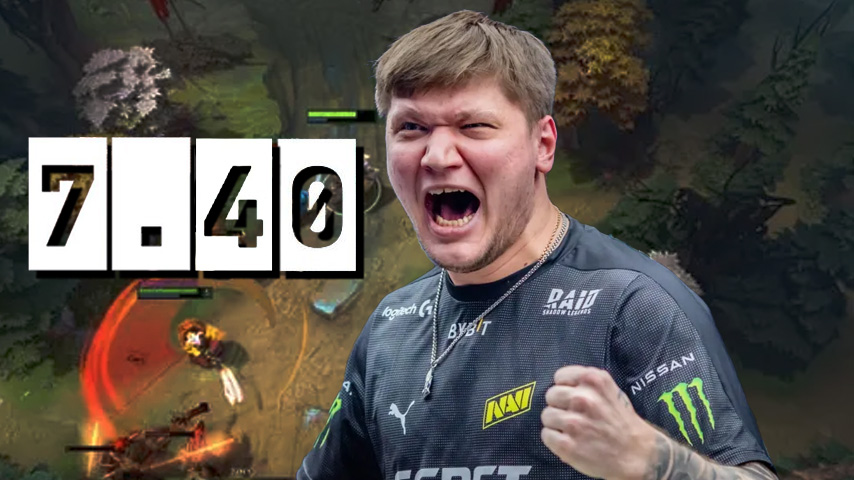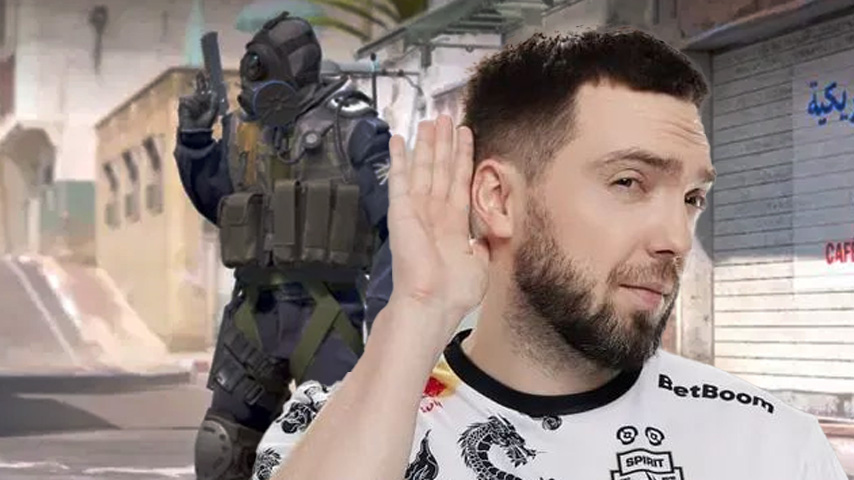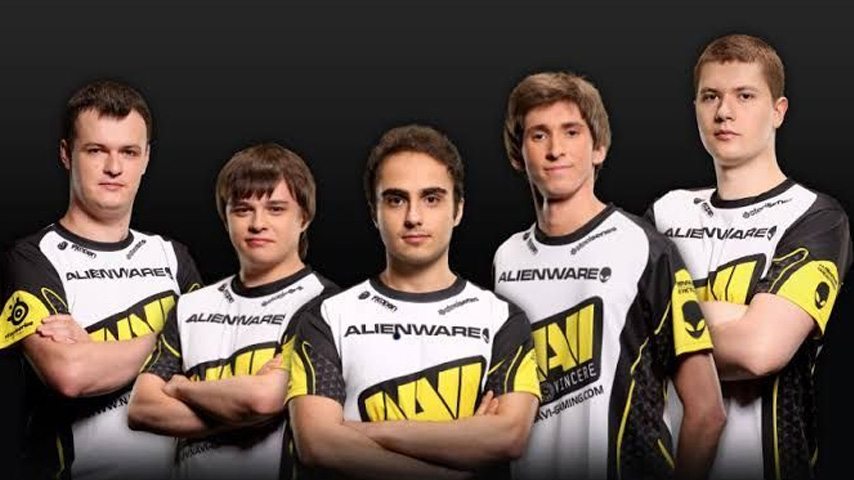How Match Duration Affects Victory in Dota 2 and CS2
Author: Hawk Live LLC
Last updated:

Esports matches in Dota 2 and Counter-Strike 2 (CS2) often vary in length, which can significantly affect team performance and final outcomes. Studies indicate that match duration is directly linked to player concentration, physical and mental strain, as well as the tactical decisions made during the game.
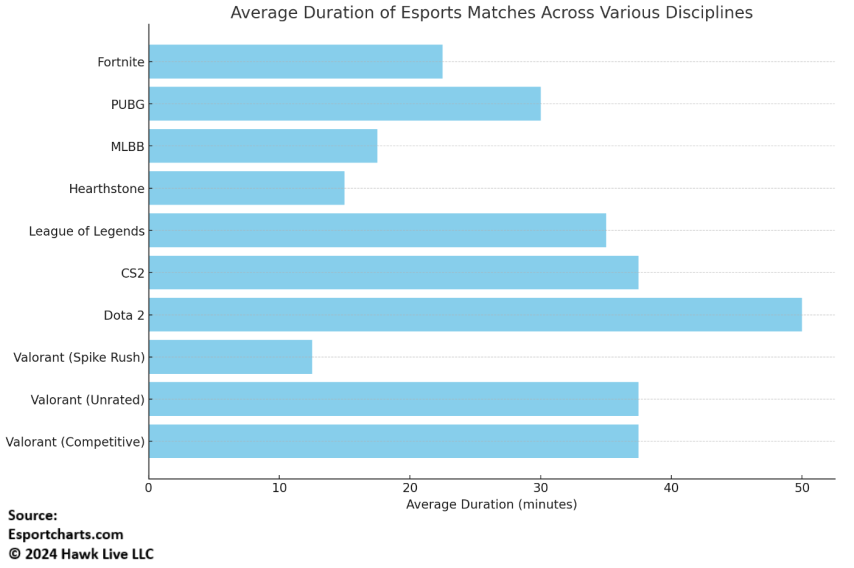 Average Match Duration in Dota 2
Average Match Duration in Dota 2
On the professional scene, the average duration of a Dota 2 match is approximately 35-45 minutes. However, some matches can extend to several hours. For instance, the longest match in esports history for Dota 2 occurred between Cloud9 and ScaryFaceZ during the qualifiers for The International 2015. The game lasted 200 minutes and 34 seconds, with Cloud9 emerging victorious.
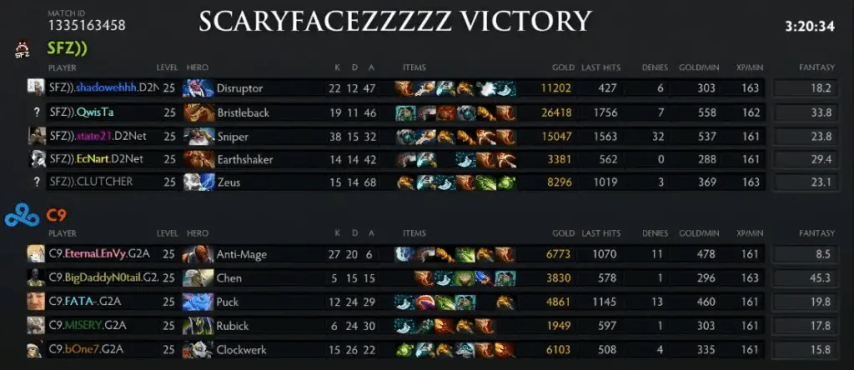 Credit: Win.gg
Credit: Win.gg
Longest Matches in Dota 2 History
Match | Event | Duration | Winner |
|---|---|---|---|
Cloud9 vs. ScaryFaceZ | TI5 Qualifiers | 200m 34s | Cloud9 |
LDG vs. iG | Dota2 Professional League | 128m 00s | iG |
OG vs. Nigma | The International 2019 | 121m 16s | |
Pain Gaming vs. Team Empire | MDL Disneyland Paris Major | 120m 31s | Pain Gaming |
Virtus.pro vs. LGD | ESL One Katowice 2018 | 116m 45s | Virtus.pro |
Mineski vs. LGD | PGL Open Bucharest 2017 | 115m 23s | Mineski |
Average Match Duration in CS2
In Counter-Strike 2, the average match duration is about 45-60 minutes due to the game’s round-based format. The longest match in CS2 history took place at ESL One Cologne 2014 between Virtus.pro and Ninjas in Pyjamas, lasting approximately 2 hours and 45 minutes, with Ninjas in Pyjamas claiming the win.
Longest Matches in CS2
Match | Event | Duration | Winner |
|---|---|---|---|
Virtus.pro vs. Ninjas in Pyjamas | ESL One Cologne 2014 | 165m | Ninjas in Pyjamas |
Cloud9 vs. Team Liquid | ESL Pro League Season 8 | 150m | Cloud9 |
Fnatic vs. Natus Vincere | DreamHack Masters Marseille 2018 | 145m | Fnatic |
FaZe Clan vs. SK Gaming | ESL One New York 2017 | 142m | FaZe Clan |
Astralis vs. Natus Vincere | IEM Katowice 2020 | 135m | Astralis |
MIBR vs. Team Liquid | ESL One Cologne 2018 | 130m | Team Liquid |
Impact of Match Duration on Victory Chances
Match duration plays a crucial role in determining victory chances in esports, particularly in games like Dota 2 and Counter-Strike 2 (CS2). The impact of time on match outcomes can be analyzed through the lens of strategy, tactics, player fatigue, and their psychological state. In this section, we will explore how match length affects victory chances, using real match examples and statistical data.
Data from major tournaments confirm that match duration affects team victory chances. For instance, in Dota 2, OpenDota data shows that in matches lasting over 50 minutes, Radiant teams won 55% of the time, while Dire teams won 45%. In CS2, HLTV.org data indicates that in matches lasting over 30 rounds, Counter-Terrorists won 53% of the time, while Terrorists won 47%.
Match duration significantly influences team victory chances in esports. In Dota 2, Radiant teams have an advantage in long matches due to their late-game heroes, while in CS2, Counter-Terrorists often win in long games due to their defensive positions.
Impact on Victory Chances in Dota 2
In Dota 2, match duration significantly influences strategic approaches and victory chances. The game is usually divided into three stages: early game, mid game, and late game. Each stage has its features and strategies that teams use to achieve victory.
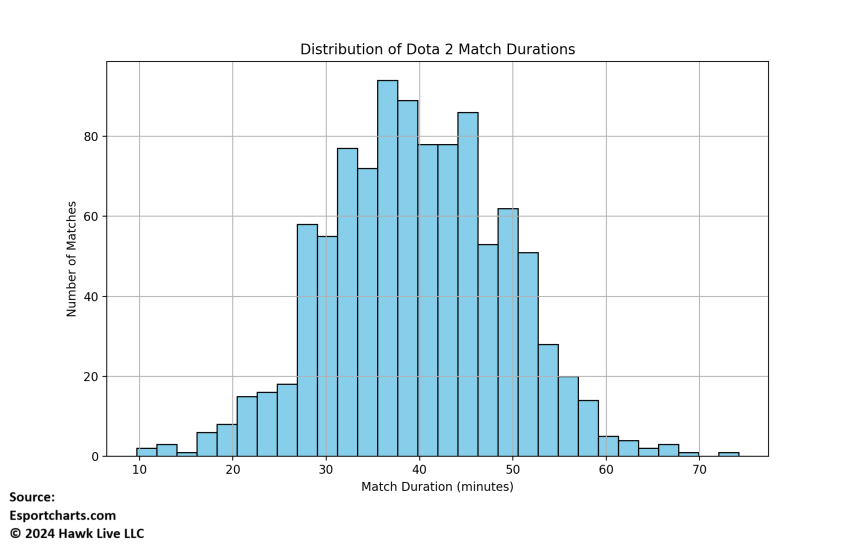
Early Game: In the early stage, aggressive actions aimed at gaining control of the map and early advantage are crucial. Teams successful in this stage can quickly gain momentum and end the game before opponents can adapt.
Mid Game: In the mid game, teams aim to consolidate their advantages and prepare for final battles. Tactical maneuvers, teamwork, and control over key objectives like Roshan are essential here.
Late Game: In the late game, occurring after 40-50 minutes of play, heroes acquire maximum items and abilities, making battles more intense and decisive. Notably, in long matches, teams with strong late-game heroes often secure victory.
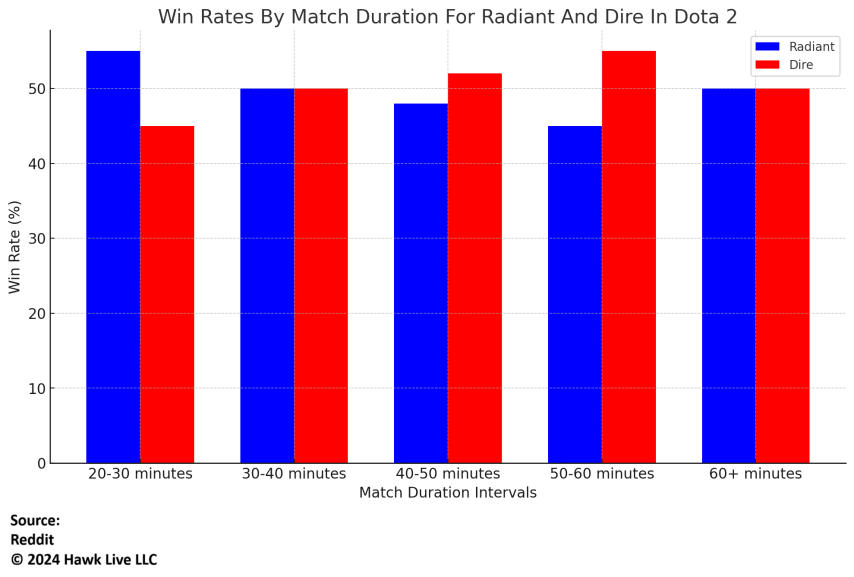
Example: In the final of The International 2018 between OG and PSG.LGD, a match lasting 65 minutes showed that OG, playing as Radiant, won due to their powerful late-game heroes. Statistics indicate that in matches lasting over 50 minutes, Radiant teams won 55% of the time, highlighting their advantage in long games.
Impact on Victory Chances in CS2
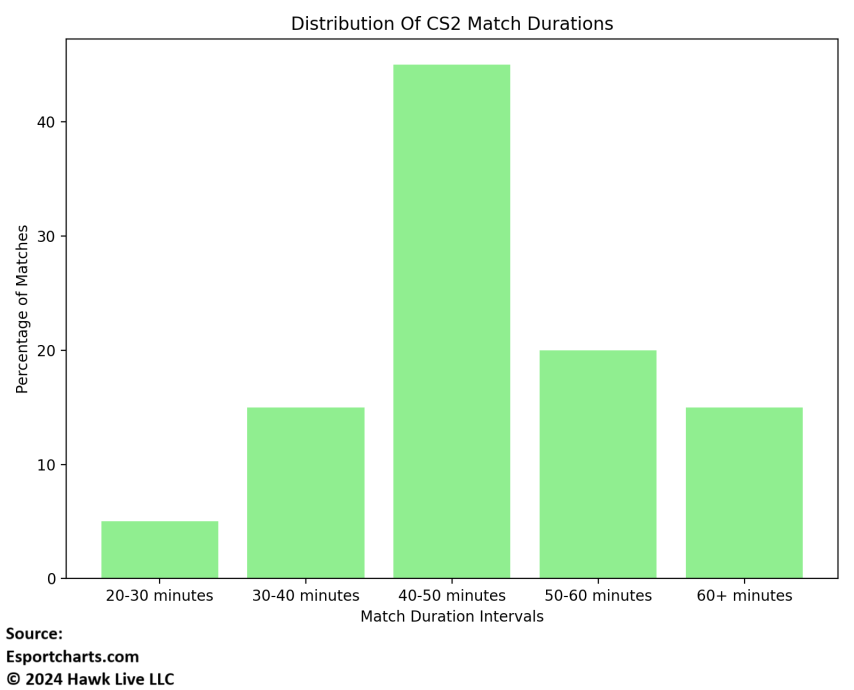
In Counter-Strike 2, match duration also plays a significant role in determining victory chances. The game is divided into rounds, with teams alternating roles as Terrorists and Counter-Terrorists. Each side has its strengths and weaknesses, which become more noticeable in long matches.
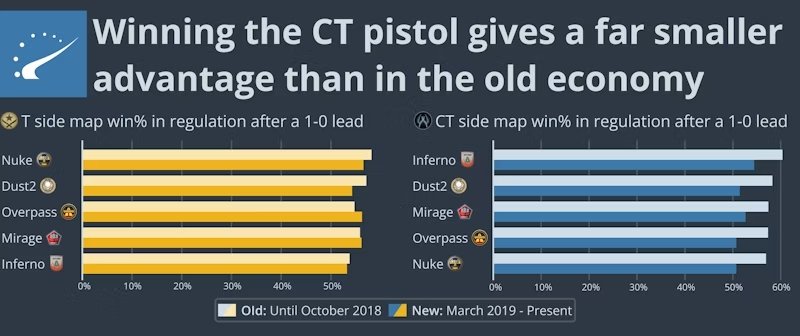 Credit: hltv.org
Credit: hltv.org
Early Rounds: Gaining an economic advantage is crucial in early rounds, allowing teams to buy better weapons and equipment. Teams that win the first few rounds can lay the groundwork for further dominance.
Mid Rounds: In the mid game, teams aim to maintain their positions, with tactical decisions like grenade usage and control over key points being vital. Strategies for resource management also play a significant role.
Late Rounds: In long matches of more than 30 rounds, player endurance becomes essential. Counter-Terrorists have a slight advantage in such matches due to their defensive positions and ability to hold key points.
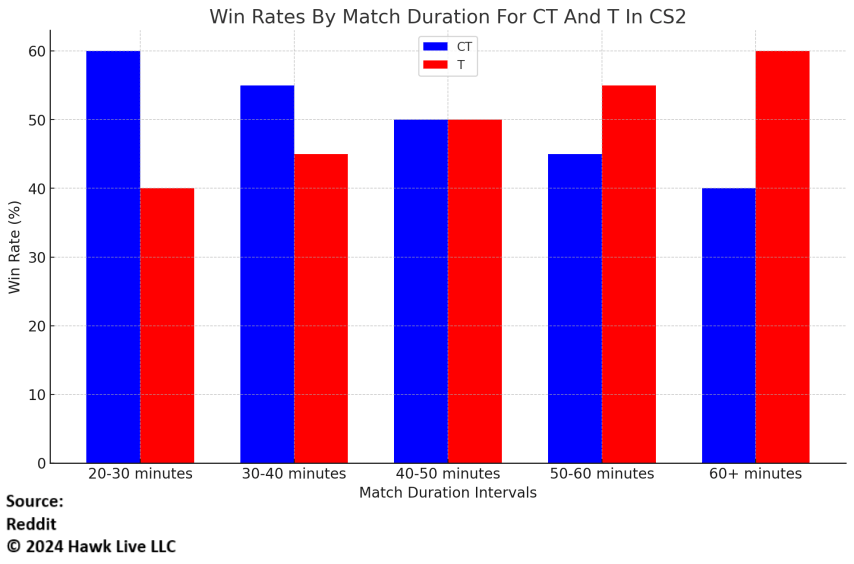
Example: At the IEM Katowice 2020 tournament, in a match between Astralis and Natus Vincere lasting 44 rounds, Astralis won by playing as Counter-Terrorists in the final crucial rounds. Statistics show that in matches lasting over 30 rounds, Counter-Terrorists won 53% of the time, highlighting their advantage in long games.
How Does Match Duration Affect Team Performance?
Long matches in esports, such as Dota 2 and CS2, can significantly affect the physical and mental state of players, which, in turn, impacts their performance and concentration.
Physical Impact
During long matches, players spend a lot of time in a seated position, which can lead to various physical problems. Prolonged sitting causes tension in the muscles of the back, neck, and shoulders, resulting in discomfort and pain. Additionally, prolonged fixed posture and constant eye strain can lead to eye fatigue and headaches.
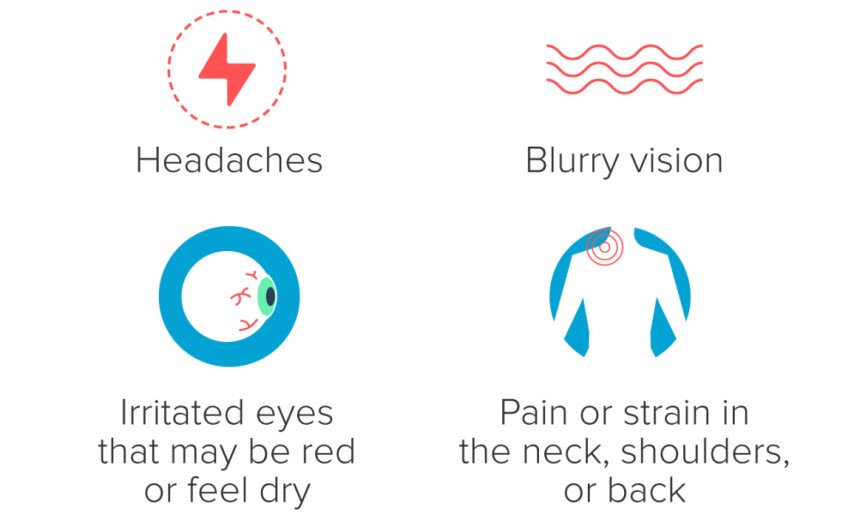 Credit: Healthline, “8 Tips to Prevent Eyestrain”
Credit: Healthline, “8 Tips to Prevent Eyestrain”
Muscle fatigue and pain can reduce reaction time and decision-making speed, which is critical in games where every second counts. Studies show that regular breaks, stretching, and changing posture can mitigate these negative effects.
 Credit: PainHealth
Credit: PainHealth
Mental Impact
Long matches also place significant mental strain on players. Prolonged high-level concentration leads to fatigue and exhaustion. High stakes and the responsibility for the match outcome create additional stress, which can lead to emotional burnout.
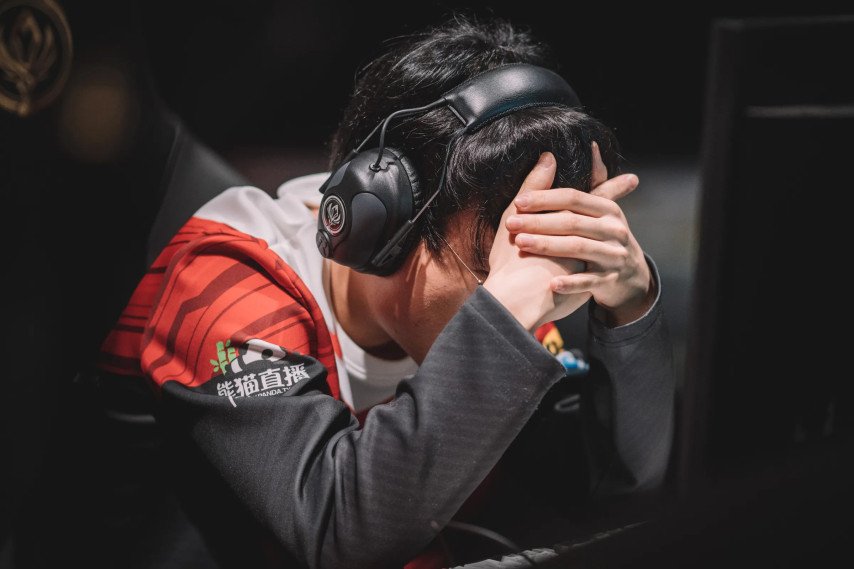 Credit: Wired
Credit: Wired
Mental exhaustion reduces cognitive functions such as attention, memory, and the ability to make quick decisions. This is especially relevant in crucial matches where even the slightest mistake can lead to defeat.
Recommendations for Maintaining Performance
To maintain high performance and concentration during long matches, it is recommended to follow several medical guidelines:
Interval | Recommendation |
|---|---|
Every 20 minutes | Perform eye exercises. Look away from the screen and focus on distant objects for at least 20 seconds. |
Every 30 minutes | Take a short break. Stand up, stretch your legs, and walk around to reduce muscle tension. |
Every 45 minutes | Drink water. Stay hydrated to maintain cognitive function and physical performance. |
Every 60 minutes | Perform full-body stretches. Stretch your back, neck, shoulders, and legs to alleviate stiffness. |
Every 90 minutes | Eat a light snack. Consume a nutritious snack to keep your energy levels up. |
Every 2 hours | Take a longer break. Step away from the computer for 10-15 minutes, practice deep breathing or meditation to reduce stress. |
These measures will help esports athletes maintain high performance and concentration throughout long matches, minimizing the negative impact of physical and mental strain.
Tournament organizers account for this factor and implement rules for breaks. For example, in CS2, short breaks are allowed after every 15-20 minutes of play, and in Dota 2, breaks are scheduled every 30-40 minutes. These breaks help players recover, relax a bit, and discuss tactical changes.
Match duration affects team tactical decisions. In Dota 2, for example, strategy can change depending on the game stage. In the late game, heroes accumulate more resources and become stronger, influencing the team's overall strategy. In CS2, long matches mean more rounds, allowing teams to adapt their strategies based on previous round successes or failures.
Prolonged matches can lead to serious consequences. Players may experience intense pressure, increasing with each additional round or minute of play. This pressure can lead to mistakes and a decrease in overall team performance. Furthermore, extended matches can change the game dynamics, giving an advantage to teams better prepared for long battles and with more enduring players.
Conclusion
Match duration plays a key role in determining victory chances in esports, especially in Dota 2 and Counter-Strike 2. Long matches require not only high skill levels and tactical thinking but also physical and mental endurance. In Dota 2, Radiant teams have a slight advantage in long matches due to their late-game heroes, while in CS2, the advantage often lies with Counter-Terrorists due to their defensive positions. Understanding these patterns can help teams develop more effective strategies and improve their chances of victory in long games.
For more insights into the fast-growing world of esports, visit our other research to stay updated on the latest trends and breakthroughs.





